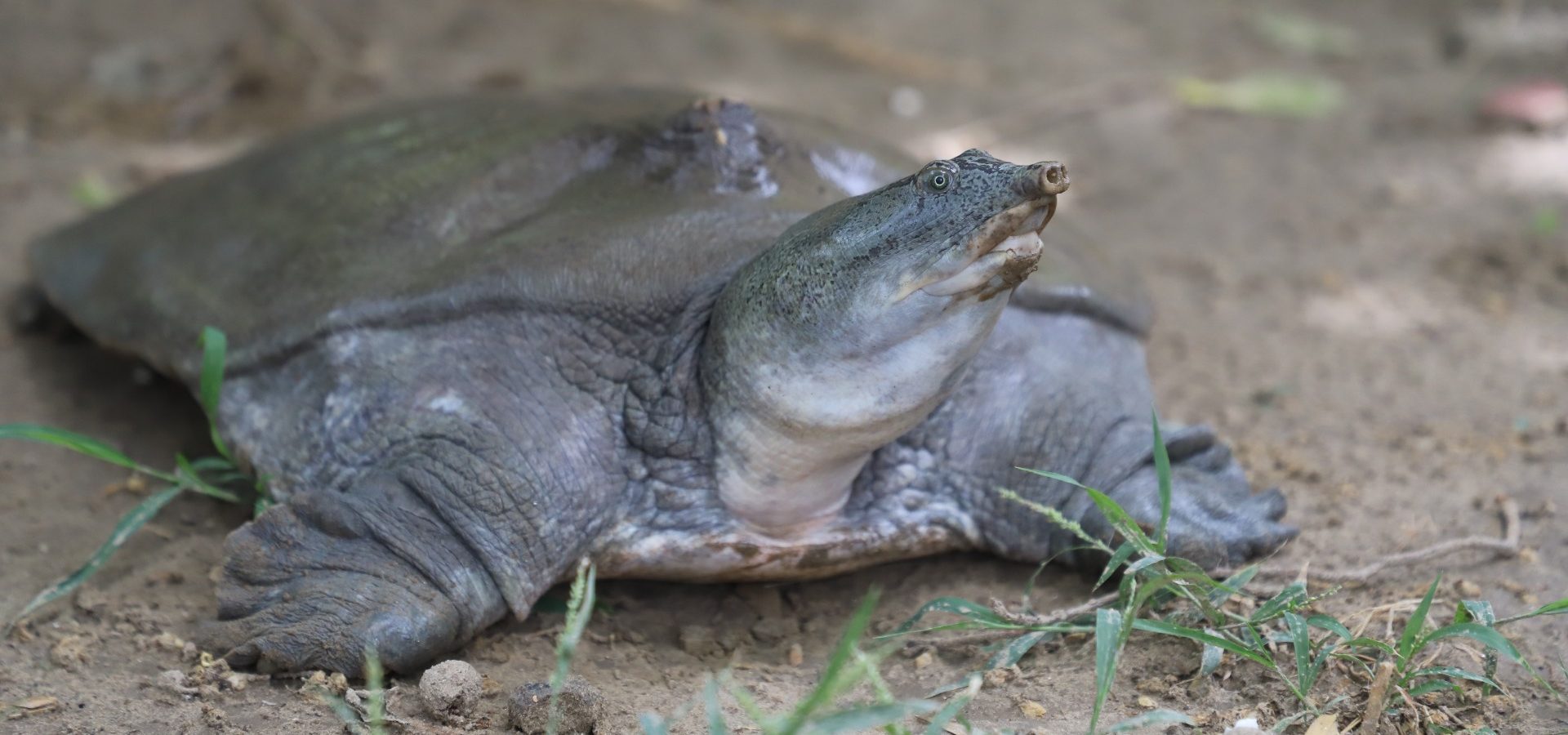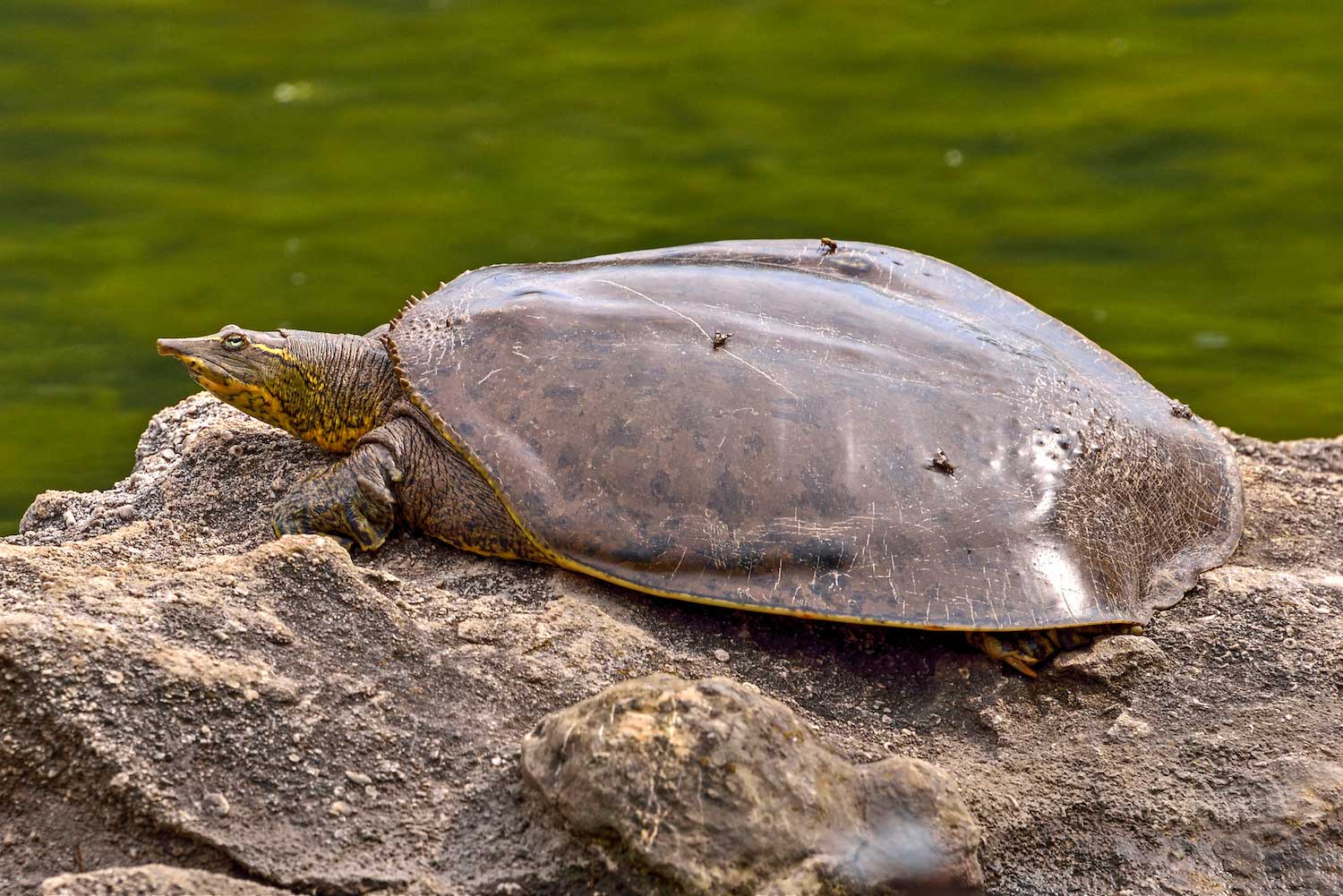Spiny softshell turtles are not dangerous but they are considered endangered due to habitat loss and hunting. Spiny softshell turtles, though not dangerous, face a real threat as they are classified as an endangered species.
These unique turtles inhabit freshwater bodies, and their distinct flattened shell and spiky appearance set them apart from other turtle species. Despite their harmless nature, these fascinating creatures are confronted by two primary challenges: habitat destruction and overexploitation. Firstly, their natural habitats are being destroyed at an alarming rate due to human activities such as pollution and urbanization.
Secondly, they are frequently hunted for their meat or captured for the exotic pet trade. Consequently, the population of spiny softshell turtles is declining rapidly, and urgent conservation efforts are necessary to protect and revive their dwindling numbers.

Credit: wildlifesos.org
Are Spiny Softshell Turtles Dangerous?
Spiny softshell turtles, also known as Apalone spinifera, are not typically considered dangerous to humans. These aquatic turtles have unique physical characteristics that help them thrive in their natural habitat.
Physical Characteristics Of Spiny Softshell Turtles
Spiny softshell turtles have a flattened shell, which allows them to move swiftly in water. Their body is covered in a leathery skin instead of traditional scales, giving them a soft texture. This adaptation enables them to maneuver easily through muddy or sandy river bottoms.
Their unique snout shape, resembling an elongated snout, helps them capture prey in water and breathe while hidden underwater. Furthermore, their ability to bury themselves in sand or mud with only their heads exposed allows them to remain concealed and escape potential threats.
Behavioral Traits That Could Be Perceived As Dangerous
Although spiny softshell turtles are generally harmless, they may exhibit certain behaviors that could be interpreted as dangerous. When threatened, these turtles tend to defend themselves by hissing, biting, and clawing. However, these defensive mechanisms are primarily used as a means of protection rather than aggression towards humans.
Moreover, spiny softshell turtles are listed as species of conservation concern in some areas due to their declining populations. Habitat loss, pollution, and overharvesting have led to their endangered status in certain regions.
In conclusion, while spiny softshell turtles may display defensive behaviors and are considered endangered in some areas, they are generally not dangerous to humans.

Credit: en.wikipedia.org
Are Spiny Softshell Turtles Endangered?
Are Spiny Softshell Turtles Endangered?
Current Population Status:
Spiny Softshell Turtles (Apalone spinifera) are indeed facing significant challenges in terms of their population status. These turtles are listed as species of concern in various regions, including some states of the United States and the International Union for Conservation of Nature (IUCN). While population data varies among different locations, it is evident that the numbers have been declining steadily.
Threats and Challenges to Spiny Softshell Turtles:
| Threats | Challenges |
|---|---|
| Habitat loss and degradation due to urbanization, agriculture, and infrastructure development | Low reproductive rates and limited breeding opportunities, as well as vulnerability to predation and pollution |
| Illegal collection for the pet trade and exploitation for food | Competition with invasive species for resources, such as food and nesting sites |
| Climate change and its impacts on nesting habitats and prey availability | Fragmentation of populations, isolating individuals and reducing genetic diversity |
Efforts are underway to mitigate these threats and protect the habitats of Spiny Softshell Turtles. Conservation initiatives include habitat restoration, captive breeding programs, and public awareness campaigns. Collaborative research and implementing effective conservation strategies are crucial to ensure the survival and recovery of these fascinating and vulnerable turtle species.

Credit: www.nwf.org
Conclusion
Spiny softshell turtles are fascinating creatures that can be found in freshwater habitats. While they may appear intimidating with their spiny shells, they pose no serious threat to humans. However, their populations are declining due to habitat destruction and pollution, making them an endangered species.
It is crucial to raise awareness and take necessary conservation measures to protect these unique turtles for future generations to appreciate and admire.





Leave a Reply